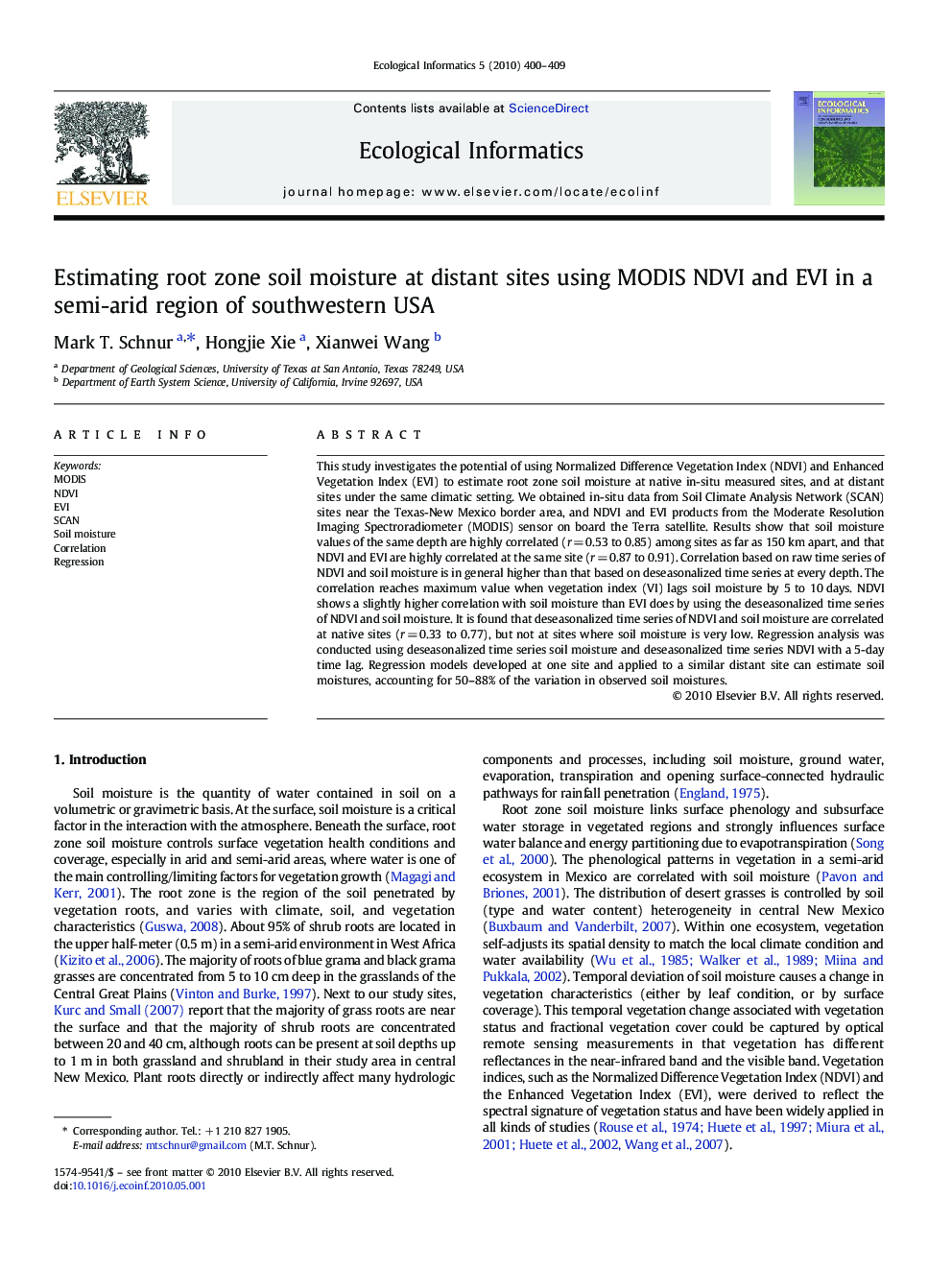| Article ID | Journal | Published Year | Pages | File Type |
|---|---|---|---|---|
| 4375279 | Ecological Informatics | 2010 | 10 Pages |
This study investigates the potential of using Normalized Difference Vegetation Index (NDVI) and Enhanced Vegetation Index (EVI) to estimate root zone soil moisture at native in-situ measured sites, and at distant sites under the same climatic setting. We obtained in-situ data from Soil Climate Analysis Network (SCAN) sites near the Texas-New Mexico border area, and NDVI and EVI products from the Moderate Resolution Imaging Spectroradiometer (MODIS) sensor on board the Terra satellite. Results show that soil moisture values of the same depth are highly correlated (r = 0.53 to 0.85) among sites as far as 150 km apart, and that NDVI and EVI are highly correlated at the same site (r = 0.87 to 0.91). Correlation based on raw time series of NDVI and soil moisture is in general higher than that based on deseasonalized time series at every depth. The correlation reaches maximum value when vegetation index (VI) lags soil moisture by 5 to 10 days. NDVI shows a slightly higher correlation with soil moisture than EVI does by using the deseasonalized time series of NDVI and soil moisture. It is found that deseasonalized time series of NDVI and soil moisture are correlated at native sites (r = 0.33 to 0.77), but not at sites where soil moisture is very low. Regression analysis was conducted using deseasonalized time series soil moisture and deseasonalized time series NDVI with a 5-day time lag. Regression models developed at one site and applied to a similar distant site can estimate soil moistures, accounting for 50–88% of the variation in observed soil moistures.
